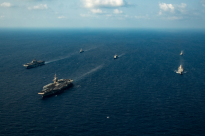Since the change of national defense strategies in 2018, the United States has strengthened its military activities in the South China Sea.
In 2019, as the number of ship deployed by the U.S. military in India-Tai District surged, the U.S. military continued to maintain high-intensity military activities in the South China Sea region. The major strategic forces such as aircraft carriers, amphibious attack ships, bombers and other major strategic forces frequently entered and exited the South China Sea activities.Carrying out various reconnaissance operations, the freedom of navigation -type navigation of the island has increased rapidly, and military diplomacy is unprecedented.The South China Sea has become the forefront of strategic competition between China and the United States.On March 26, a spokesman for the Ministry of National Defense solemnly urged the United States to stop taking provocative dangerous actions at the press conference.
In order to maintain and promote the peace, stability and prosperity of the South China Sea, the strategic situation of the South China Sea's strategic situation is planned to continue to track the deployment of the US military in large water surface ships in the South China Sea, the power of underwater nuclear submarines, the maritime police ship regiment, etc.Content, provide professional and detailed data services and analysis reports to help all parties control the differences and control, surpass competition and cooperate.The report was released on March 28.
The following is the report of the report.Report the full text of this link.
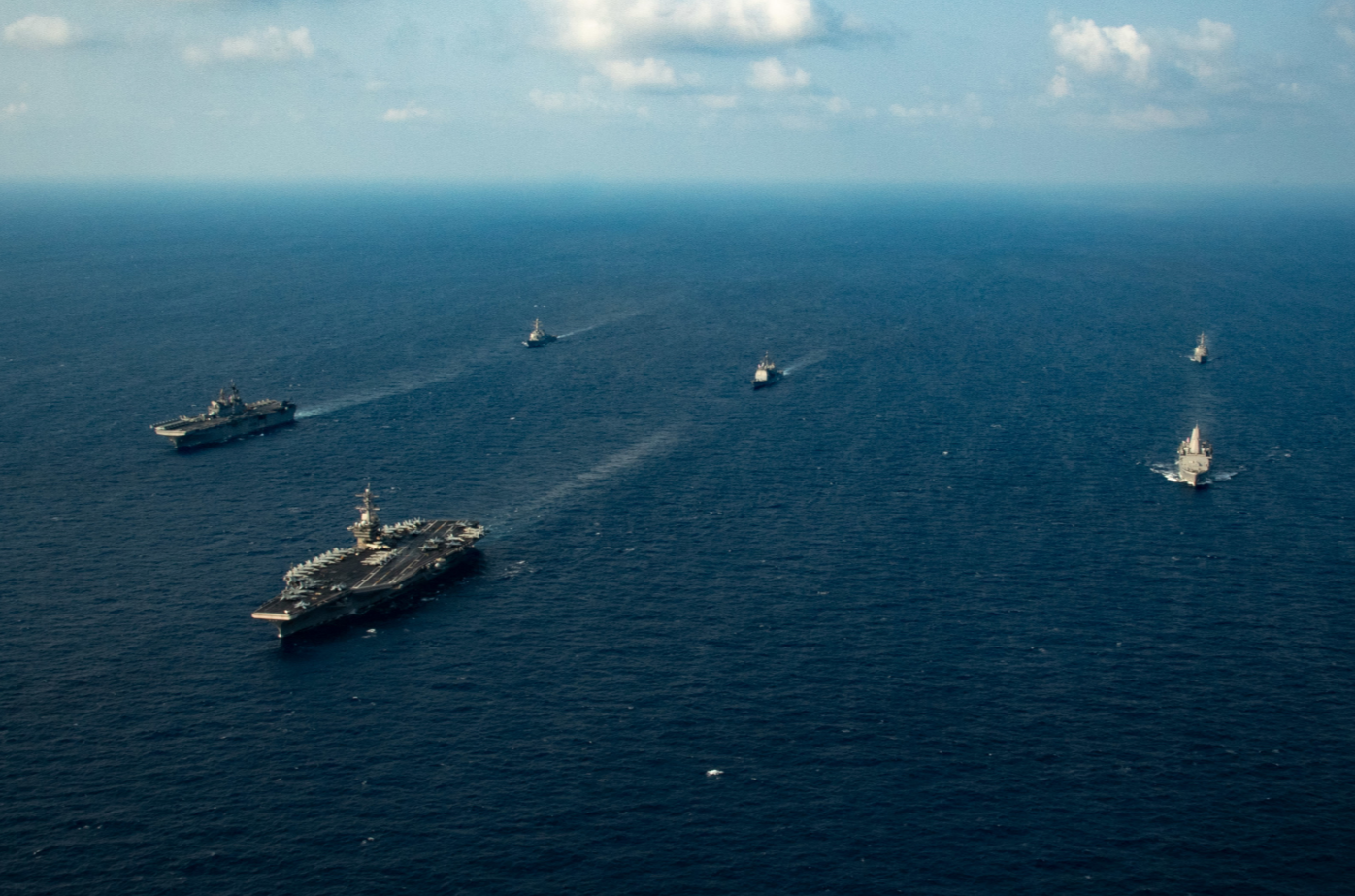
In March 2020, the U.S. Army Roseford Aircraft Carrier and the United States Amphibious Attack Ship, Oasia Amphibious Dock Login Ship and 3 frigates.
Activity of large surface ships in the South China Sea
The aircraft carrier is the core of the US Navy's deterrent power. In 2019, the U.S. aircraft carrier and amphibious attack ships still maintain a high -intensity activity situation in the South China Sea region, and combined with regional situations and current affairs hotspots to continuously carry out targeted cruise deterrence.In the whole year of 2019, the US Navy has three aircraft carriers to the South China Sea, accounting for 30%of the current power of all aircraft carriers in the U.S. military.The three aircraft carriers are three aircraft carriers (CVN-72, CVN-72, and Lincoln (CVN-74), CVN-72.
Among the three aircraft carriers, except for Lincoln, the deployment task of the end of the Middle East was returned to the South China Sea and transferred to the San Diego Naval Base in California. The remaining two aircraft carriers carried out targeted deployment tasks in the South China Sea.The Steinis aircraft carrier is the five -month overseas deployment mission to end the Indian Ocean and the Malacca Strait to the South China Sea in the east and east of the South China Sea.During the year, the Reagan carrier performed two cruise tasks of summer cruise and autumn cruise during the year. Among them, during the summer cruise, they had been in and out of the South China Sea twice, but the time to stay in the South China Sea was relatively short.In the South China Sea, especially between the Nansha Islands and Huangyan Island, various targeted training activities have been carried out.
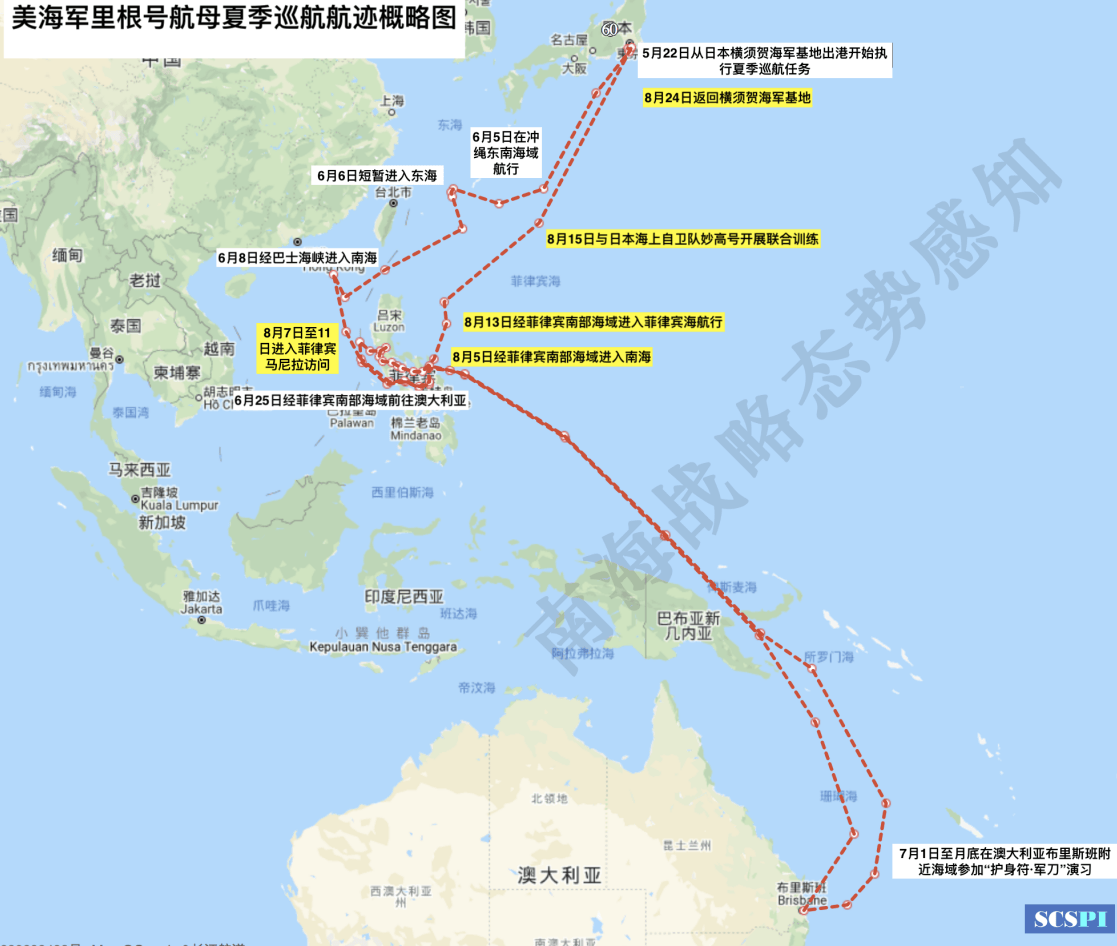
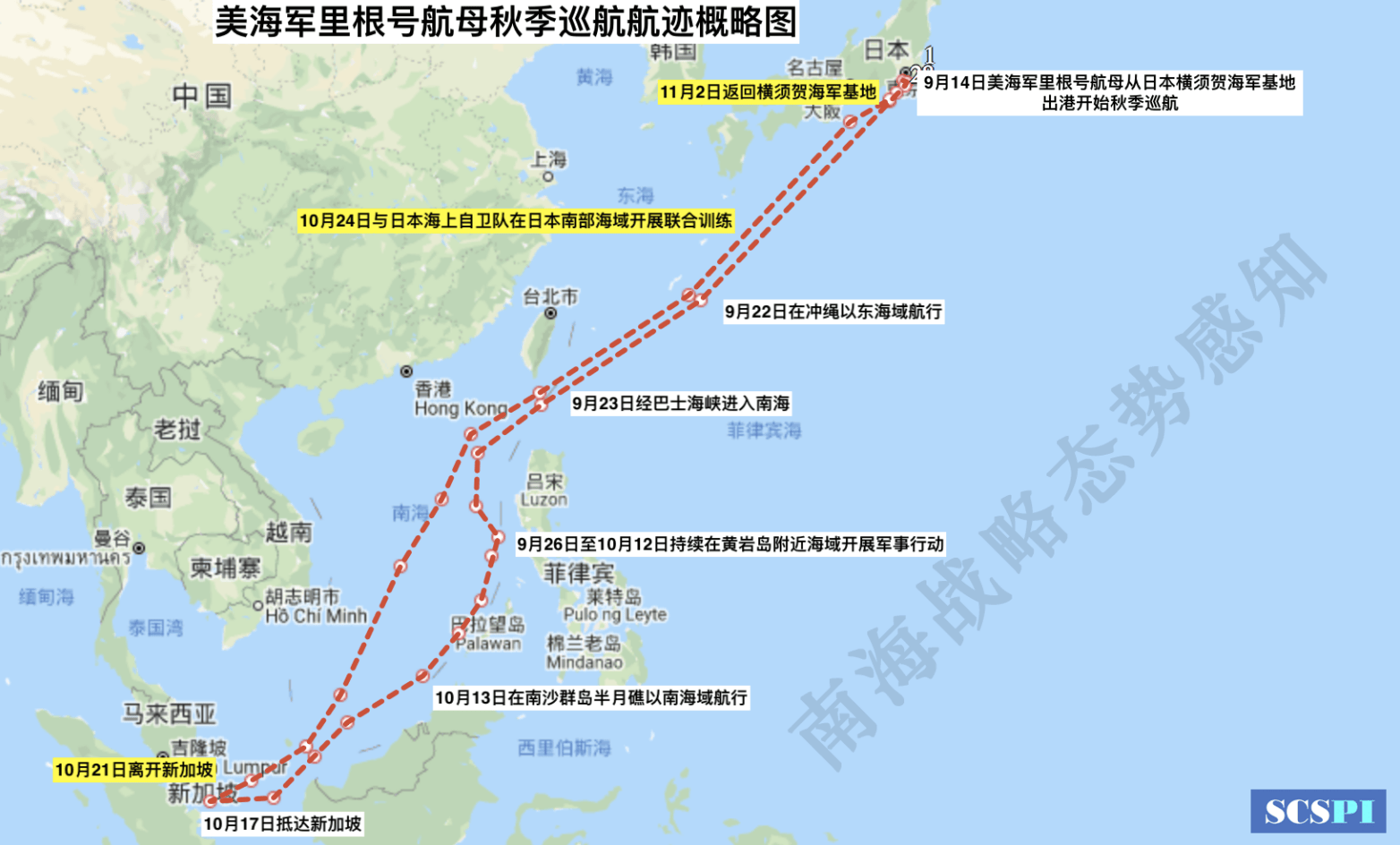
In addition to the large aircraft carrier-based aircraft carrier strike brigade, the amphibious alert team composed of an amphibious attack ship Essex (LHD-2), Hornets (USS WASP, LHD-1), and boxer (USS Boxer, LHD-6) Three-ship attack ships in and out of the South China Sea to carry out military activities.Among them, the Hornets amphibious attack ship is equipped with 10 F-35B fighters of the Marine Corps 121 fighter attack squadron, which verify the feasibility of F-35B fighting in the region.
The amphibious alert team and the aircraft carrier strike brigade to carry out joint drills may also be a development direction of the US military maritime combat style in the future. In areas where conflicts are easily erupted, it is also a possible choice for the number of amphibious alert teams to make up.EssenceOn October 6 this year, the Reagan Aircraft Carrier Campaign and the Boxer Amphibious Motor Brigade deployed in the Middle East carried out a joint drill.
Activities of underwater power in the South China Sea
In 2019, the US Navy nuclear-powered submarine continued to maintain a high-voltage activity situation in the South China Sea and surrounding areas. According to incomplete statistics, nuclear submarines that perform combat reserve cruise tasks in the Western Pacific region throughout the year include Xiayan (SSN-773) and SiCeranton (USS SCRANTON, SSN-756), the USS Santa Fe (SSN-763), the USS Illinois (SSN-786), Annapolis (SSN-760), Oklahoma City (SSN-723), SSN-758, Hawaii (SSN-776), and Tipca (USS Topka, the USS ASN-758)SSN-754).
These submarines are not only normalized at the Gangjima Apra Port Base, as well as departing from Hawaii Pearl Harbor or the West Coast of the United States to the Indo -Pacific region to perform overseas deployment tasks.In view of the hiddenness of the US Navy's nuclear -powered attack submarine's trajectory, we cannot accurately detect the situation of entering and leaving the South China Sea. However, considering that the South China Sea is a hot concentration area in the Indo -Pacific region, it is also the focus of the US military.It is impossible to leave a gap in the South China Sea during the patrol mission.
Activities of Air Power in the South China Sea
The bomber is the core of the U.S. air strategic deterrent power. In 2019, the US Air Force has the 23 expeditionary bomber squadron and the 69 expedition bomber squadron deployed at the Anderson Air Force Base of Guam to perform a continuous bomber.After July 12, it was deployed for the 69th expedition bomber squadron.
According to public information, the U.S. Air Force B-52H bomber in the first half of the year entered the South China Sea to carry out military operations. During the second half of the year, especially during the sailing brigade of the US Navy's Rida carrier in the South China Sea, the B-52H bomber entered the South China Sea to carry out military officers.The activity is more frequent.
In addition to frequent activities, the U.S. military has also strengthened the intensity of the coordinated drill of the B-52H bomber and the aircraft carrier battle group.
Sea and air reconnaissance troops densely carried out reconnaissance and intelligence collection operations
In 2019, the USNS Victorious (T-AGOS-19), the USNS Able, T-AGOS-20), and validity number (USNS Effective, T-AGOS-21), Loyal (USNS LYAL, T-AGOS-22), USNS Impeccable (T-AGOS-23), Bodic 2019 (USNS BOWDITCH, T-AGS-62), Hamson (USNS Henson,T-AGS-63) and the USNS Mary Sears (T-AGS-65) have been carried out in the South China Sea region for a long time.Carry out reconnaissance measurements in the south of Sanya, less than 120 from Sanya Harborkilometer.In addition, the U.S. Navy Saldot; RV Sally Ride (Agor-28) marine survey ship stopped in the South China Sea to Kaohsiung Port in Taiwan in late August.
The U.S. military is normalized to deploy more than two marine reconnaissance vessels in the South China Sea region to conduct reconnaissance operations. The reconnaissance area is mainly concentrated in the south of Sanya, near the Basilica Strait, and the sea near the Zhongsha Islands.And closely follow the dynamics of the Chinese navy's underwater strength.
In terms of aviation reconnaissance, the U.S. military uses the RQ-4B global eagle drone, P-8A, and P-3C anti-submarine patrol machines deployed by Guama Anthacen Air Force Base, Okinawa Kaida Air Force Base, the Philippine Krack Air Force Base, the Philippine Air Force Base, the Philippine Air Force Base, the Philippine Air Force Base, the Philippines, EP-3E reconnaissance aircraft, RC-135 series reconnaissance aircraft, and U-2S high-altitude reconnaissance aircraft and other air reconnaissance forces have carried out various reconnaissance operations on the South China Sea intensive.
RQ-4B Global Eagle UAV usually takes off from the Anderson Air Force Base of Guam. It has entered the South China Sea to conduct reconnaissance operations over the Philippines. With high altitude, long-term hourly and multi-method reconnaissance performance, it is one of the main force of performing reconnaissance tasks in the South China Sea.The reconnaissance frequency is maintained 3 to 4 times a month, and the scope of reconnaissance covers most of the Philippines and the eastern part of the South China Sea.
At present, the U.S. Navy has been normally deployed at the Film Clark Air Force Base. There are 2 to 3 P-8A anti-submarine patrol aircraft. During a special time, the Riden aircraft carrier strike the brigade sailing in the South China Sea. Currently, the US Navy has 1 equipment APS in the Western Pacific region.-154 P-8A anti-submarine patrol aircraft (number: 169010, 168996) of the high-end air sensor mainly performs tracking and monitoring tasks of water surface targets.
The U.S. air reconnaissance force in the South China Sea is mainly carried out in a combination of routine reconnaissance and special reconnaissance tasks.In the routine reconnaissance mission, reconnaissance aircraft generally follow the established routes: after entering the South China Sea from entering the South China Sea to the northwest, enter the southeast airspace, and return to the west of the southwest of Sanya along the coastline of China South China.The special reconnaissance operation mainly selects the corresponding military execution based on the nature of the task, and the selection of the reconnaissance airspace is also adjusted according to the needs of the task.Special reconnaissance operations are mainly to provide intelligence support for U.S. aircraft carriers, support for cruising surface ships, and reconnaissance for large -scale military operations of the Chinese Navy.
Judging from the one-year reconnaissance situation, the US-Air Force's U-2S high-altitude reconnaissance aircraft and RQ-4B global eagle drone mainly perform routine reconnaissance tasks, while RC-135 series reconnaissance aircraft, P-8A, P-3CAnti-submarine patrol aircraft and EP-3E reconnaissance machines have more special reconnaissance tasks.

The frequency of freedom of the island navigation is greatly improved and increasingly normalized
In 2019, as the number of surface ships deployed increased, the U.S. military continued to carry out freedom of navigation.
According to public information statistics, in 2018, the American Navy launched only 5 times of freedom of navigation in the South China Sea in 2018, while 8 times in 2019, an increase of 60%.Two times.Among them, the waters near the Xisha Islands have been carried out three times, and they were carried out in the waters near the Nansha Islands, and they were implemented in the waters near Huangyan Island.
Judging from the ships that perform such tasks, except for the McCclubal missile destroyer on January 7, it belongs to the seventh fleet deployed in Japan, and the remaining ships are from the third fleet of the local San Diego naval base.
During the operation, the U.S. Navy's air reconnaissance forces such as P-8A anti-submarine patrollers and EP-3E reconnaissance aircraft in the US Navy implemented a close coordination and precise route selection of sea-air collaborations. The operation became more meticulous and intentionally seeking the normalization of action.
Especially since 2019, the US Navy's actions no longer abide by a certain time interval, sometimes it is time to build a trend that wants to do anytime, anywhere, and sometimes only one day.
In addition, the freedom of navigation of the US Navy is increasingly retaliated.On August 27, officials of the US Department of Defense revealed to Reuters reporters that China rejected the request of the US naval warship visits to Qingdao Port. Then on August 28, the Japanese Navy Miye missile destroyer launched a freedom of navigation in the waters near the Nansha Islands.action.
As Sino -US competition has exacerbated the US military, it has become a major trend to retaliate against China through the free action of navigation in the South China Sea or voyage of the Taiwan Strait.
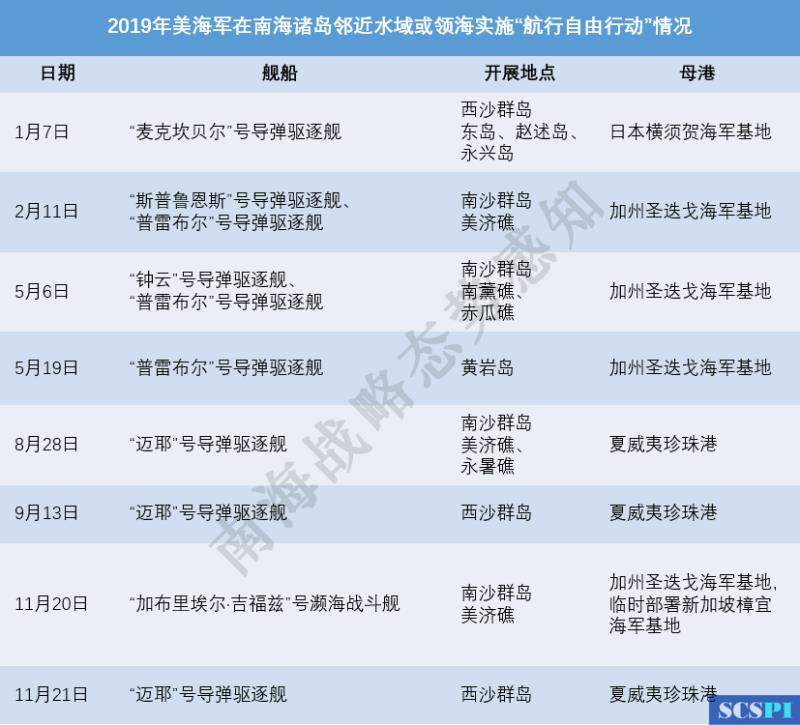
Various types of military exercises, military diplomacy dense development
In 2019, the U.S. military has greatly strengthened its military exercise content and strength in the South China Sea and its surrounding areas, and continued to strengthen joint training with the countries and parts of the country and some out -of -domains in the South China Sea.A total of hundreds of times have been exercises, and there are more than 50 well -known various exercises held in the South China Sea alone.
These exercises cover various fields such as anti -ship operations, underwater offensive and defense, anti -water mines, air operations and defense, special operations, network space operations, sea area perception, maritime law enforcement and humanitarian rescue and disaster reduction.When exercises with alliances and foreign countries, the U.S. military pays attention to
The U.S. military's joint exercises in the South China Sea and the surrounding areas involve ASEAN countries, as well as foreign countries such as Japan, Australia, New Zealand, France, India, and Canada.New exercise subjects and content, focusing on highlighting maritime law enforcement, seas' situation perception, and network space operations.In the exercises with out -of -domain countries, the military combat drills with hardcore allies in the South China Sea and surrounding areas are constantly strengthening, focusing on highlighting the intention of co -operations, anti -submarine operations and anti -water mines.very obvious.
Based on the unilateral, bilateral and multi -side military exercise exercises carried out in the South China Sea and surrounding areas in 2019, the basic framework of its exercise exercises has maintained a relatively stable while focusing on the introduction of new subjects, attracting new members, pioneering new areas, and new areas.The introduction of new forces, targeted and practical colors.
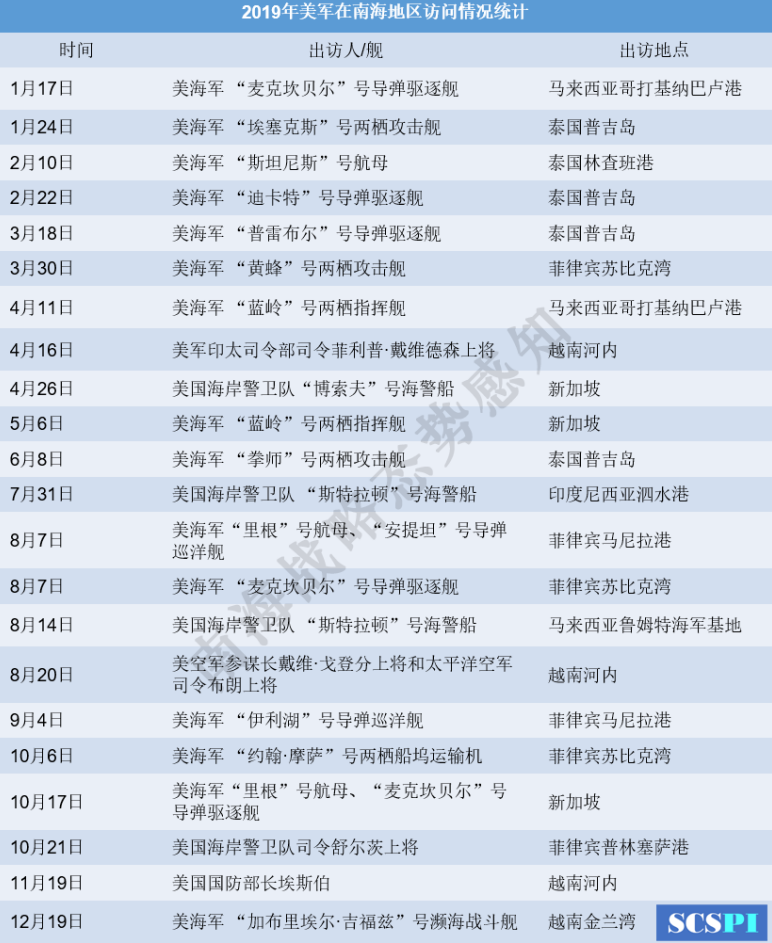
The United States Coast Guard has become an emerging force of the US Army's South China Sea
In 2019, the United States Coast Guard has deployed the two sea police officers of the USCGC Bertholf, WMSL-750 and the USCGC Stratton (WMSL-752) to the South China Sea region.On January 20, the police ship set off from the port of Alamida, California to the Western Pacific region and entered the South China Sea in early April, while the Stradon Maritime Police Ship was from the Port of Alamida, California on June 12Go to the West Pacific region to arrive in Indonesia on July 31.
During the deployment of the South China Sea, the United States Coast Guard Marine Police Ship carried out various exchanges and cooperation operations with countries in the region, and even participated in a number of exercises and exercises from many US military organizations.In summary, the US Coast Guard Heroes Ship in the South China Sea is reflected in the following two aspects:
The first is to actively participate in civil exercises and drill subjects such as maritime law enforcement, search and rescue.
The second is to actively participate in the US military operations and deeply integrate into the US combat system.
Military diplomacy, military salesEnhancement of military aid
In 2019, the U.S. military actively carried out military diplomatic work in the South China Sea region, continuously deepened military cooperation with regional countries. At the same time, it enhanced regional countries' dependence on the United States through military sales and weapons and equipment gifts.
In terms of military exchanges, the U.S. military has followed the previous military diplomacy ideas. It has continued to deepen the military exchanges with high -level to grassroots through high -level to grassroots through various methods such as military leaders' visits and ships in the South China Sea through various methods such as military leaders and ships.
From the perspective of annual visits, Vietnam has become the object of actively attracting high -level US military.In terms of military sales, it actively sells advanced weapons and equipment to relevant countries, and continuously enhances its military dependence on the United States in the region or region.
Summary and prospects
In 2019, the existence and activity intensity of the US military in the South China Sea continued to enhance the trend and continued to strengthen the Chinese side.In the future, in the context of promoting the implementation of the Indian strategy and the 2018 version of the national defense strategy, the existence of the US military in the South China Sea and military operations against China will continue to strengthen.Mainly reflected in the following aspects:
The deployment of power shows a diversified trend.The U.S. military's actions in the South China Sea will still be dominated by the Navy and Air Force, but the role of armed forces such as the Marine Corps, the Army, and the Coast Guard will also become more prominent, especially in 2019After the deployment, the US Coast Guard will further increase in the South China Sea region in the future.
Sino -US troops in the South China Sea will become increasingly obvious and sharp.The U.S. military will still be tit -for -tat in accordance with the two lines of light and dark in the South China Sea.On the Ming Dynasty, the U.S. military will still use the implementation of freedom of navigation, shipping and cruise, and crossing the Taiwan Strait with the help of the US military on the Xisha Islands, Huangyan Island and Nansha Islands in the South China Sea.Construction of the battlefield.Faced with the continuous modernization of Chinese equipment and the continuous enhancement of sea and air forces, the U.S. military will inevitably be more anxious, and further strengthen the three -dimensional reconnaissance and response to Chinese military strength.The chances of closer confrontation between sea and air forces between the two sides will also increase.
Military cooperation between the United States and countries in some regions will further deepen.With the increasingly bright and sharpness of the struggle between China and the United States in the South China Sea region, the United States will further seduce relevant countries with means to strengthen military exchanges, expand the scale of military exercises, increase weapons and equipment sales, or give free old second -hand equipment.It chose the side station in China and the United States.Except for the Filipino, Singapore, and Thailand, most of the countries, most ASEAN countries and US military cooperation are still at a relatively shallow level. The increasingly improved military relations between the United States and Vietnam are likely to usher in the military.cooperate.Considering that most of the national defense budgets in Southeast Asia are limited, while strengthening military exchanges, under the framework of Indo -Pacific Ocean Safety Initiative 16, the United States will still focus on the situation and information sharing of cooperation in the waters.


